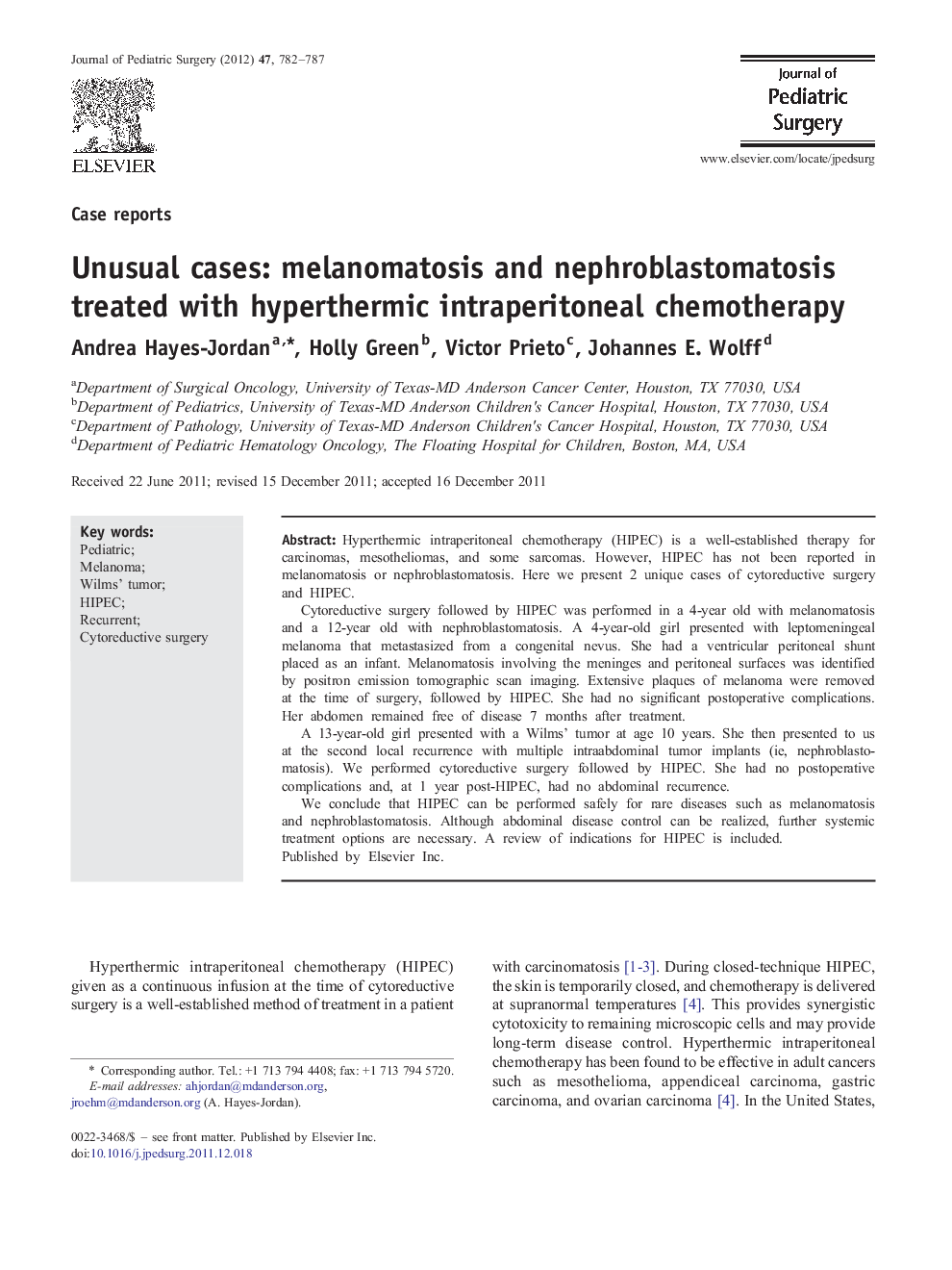| Article ID | Journal | Published Year | Pages | File Type |
|---|---|---|---|---|
| 6217266 | Journal of Pediatric Surgery | 2012 | 6 Pages |
Hyperthermic intraperitoneal chemotherapy (HIPEC) is a well-established therapy for carcinomas, mesotheliomas, and some sarcomas. However, HIPEC has not been reported in melanomatosis or nephroblastomatosis. Here we present 2 unique cases of cytoreductive surgery and HIPEC.Cytoreductive surgery followed by HIPEC was performed in a 4-year old with melanomatosis and a 12-year old with nephroblastomatosis. A 4-year-old girl presented with leptomeningeal melanoma that metastasized from a congenital nevus. She had a ventricular peritoneal shunt placed as an infant. Melanomatosis involving the meninges and peritoneal surfaces was identified by positron emission tomographic scan imaging. Extensive plaques of melanoma were removed at the time of surgery, followed by HIPEC. She had no significant postoperative complications. Her abdomen remained free of disease 7 months after treatment.A 13-year-old girl presented with a Wilms' tumor at age 10 years. She then presented to us at the second local recurrence with multiple intraabdominal tumor implants (ie, nephroblastomatosis). We performed cytoreductive surgery followed by HIPEC. She had no postoperative complications and, at 1 year post-HIPEC, had no abdominal recurrence.We conclude that HIPEC can be performed safely for rare diseases such as melanomatosis and nephroblastomatosis. Although abdominal disease control can be realized, further systemic treatment options are necessary. A review of indications for HIPEC is included.
